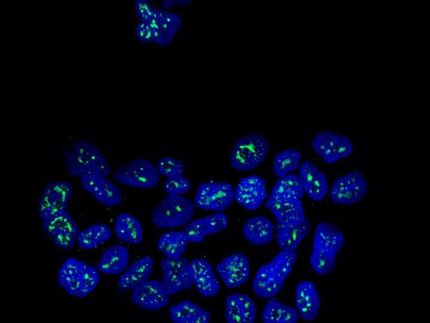Estrogen-producing neurons influence aggression in both sexes
When cells are missing, both males and females are slower to fight
Advertisement
A miniscule cluster of estrogen-producing nerve cells in the mouse brain exerts highly specific effects on aggressive behavior in both males and females, according to new research by UC San Francisco scientists.
The cells in question, known as aromatase-expressing (aromatase+) cells, represent less than five one-hundredths of a percent of the neurons in the mouse brain, but they play crucial roles in sexual differentiation during early development and in regulating sexual and social behavior in adulthood.
Though estrogen is generally thought of as a female sex hormone, during the 1970s it was discovered that the male sex hormone testosterone can be converted to estrogen in the brain by aromatase, an enzyme also found in many other mouse and human tissues.
In the male mouse, estrogen, presumably synthesized by aromatase+ neurons in the brain, is known to be involved in diverse social behaviors, including the ultrasonic "singing" that males produce when courting females, and in mating, aggression, and the marking of territory.
Aromatase+ neurons are also present, in smaller numbers, in females. But because females produce high levels of circulating estrogen and very little testosterone, it has been unclear whether aromatase+ cells in the female brain are purely vestigial or serve some other function.
To more precisely investigate the workings of aromatase+ cells, a team in the UCSF laboratory of senior author Nirao Shah, MD, PhD, used genetic methods to selectively deplete these neurons in a single brain region known as the posterodorsal medial amygdala, or MeApd, in adult mice. This structure, in which aromatase+ cells make up 40 percent of the neurons, forms part of a circuit that is vital to normal social and reproductive behavior.
"The part of the olfactory bulb that receives pheromonal information - which is what mice use to identify other mice and to respond appropriately - projects directly to the amygdala, so we know that it's important for social behavior," said first author Elizabeth K. Unger, a graduate student in the Shah lab who led the research.
After the research group eliminated aromatase+ neurons from the MeApd in male mice, the mice exhibited mostly normal social behaviors: they continued to mark their territory, and they recognized, courted, and successfully mated with females. If presented with an unfamiliar male, however, the mice acted quite differently from their normal counterparts.
When male mice encounter a strange male in their territory they typically rattle their tail threateningly and attack the intruder shortly thereafter. But male mice lacking aromatase+ neurons were slower and less aggressive in their response to other males: their tail-rattling was significantly diminished, and it took much longer for them to mount an attack. This lag in mounting attacks on intruders was correlated with the number of aromatase+ cells that had been eliminated by the researchers' genetic manipulation.
Once these mice did launch an attack, however, the aggressiveness of their fighting behavior resembled that of normal males.
In females, the consequences of depleting aromatase+ cells were also sharply restricted. These females exhibited normal responses to males, including in their mating behaviors. But if they had given birth, females lacking aromatase+ cells did not display normal levels of maternal aggression.
Female mice with nursing pups will generally attack unfamiliar male mice, because males sometimes kill rival males' pups. In a strikingly similar pattern to that seen in males lacking aromatase+ cells, however, nursing females in which these cells were depleted were much slower than normal mice to mount an attack.
Again, once attacks were initiated they were indistinguishable from those launched by normal female mice with nursing pups.
"In theory, these estrogen-producing neurons could have controlled any part of social behavior, or all social behaviors, but we found they control only a very small component of aggression," said Unger. "And considering females do not need these cells to produce estrogen, it was quite surprising to find that these cells play a similar role in both males and females."
For Shah, professor of anatomy, the results are a compelling example of "modularity" in the neural control of complex social behavior. "Though social behaviors - marking of territory, recognizing potential mates, successfully mating, fighting - seem quite 'seamless' when we observe them, this study shows that different neural systems control quite distinct, specific components of these behaviors."






















































